We might obtain a fee once you use our affiliate hyperlinks. Nevertheless, this doesn’t influence our suggestions.
 Previous chisels might be introduced again to life utilizing these easy steps.
Previous chisels might be introduced again to life utilizing these easy steps.
If ever there was a sort of used hand device that was a great candidate for restoration, it’s a chisel. Plenty of good offers on previous chisels might be discovered at flea markets, storage gross sales and auctions. And whereas many aged instruments – comparable to kinked hand saws or badly warped planes – could also be hopelessly broken, it’s often not laborious to carry a chisel again to a working life.
The method of restoring a chisel again into working order includes 4 primary steps:
1) Flattening and sprucing the again
2) Grinding the sting sq. to the perimeters
3) Grinding the bevel
4) Honing the bevel
These steps make sure that the innovative will include two polished intersecting surfaces, which is the essence of any sharp, sturdy edge. And a flat again is essential as a result of it serves as a directional reference in lots of paring and chopping operations.
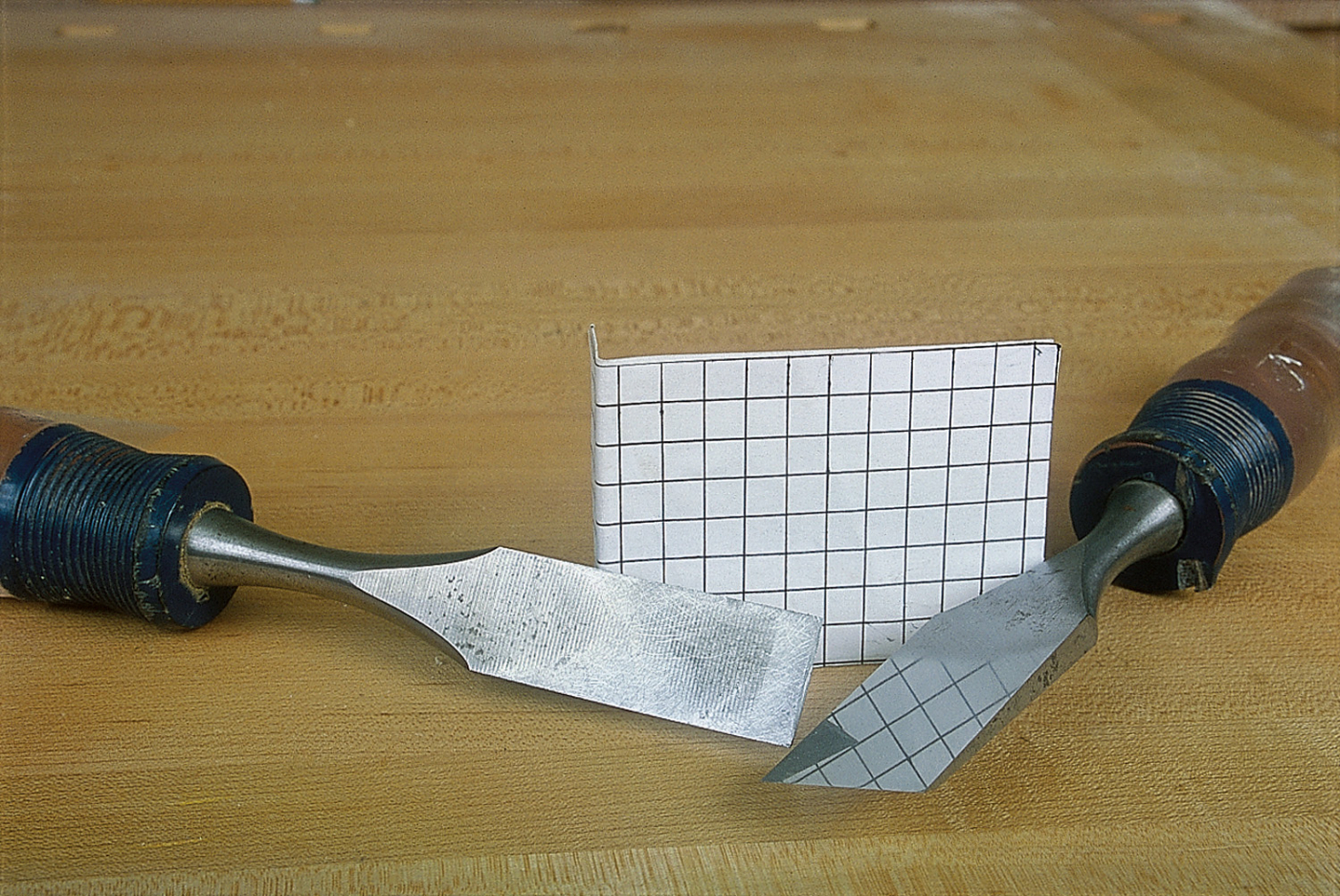
With chisels, it’s not laborious to show junk right into a jewel. It took lower than an hour to transform an abused device just like the one on the left facet of every image right into a stunningly sharp specimen just like the one at proper.
 On this article, I’ll take you thru these processes step-by-step, together with the nuances that may make all of the distinction in getting a frighteningly eager edge. Though the next method – arrived at after years of instructing sharpening and testing merchandise – is definitely not the one method to sharpen, I feel you’ll discover that it yields nice outcomes. For many chisels, it’s the blade that wants work, not the deal with. Most wood handles might be sanded and refinished. If it’s good to substitute yours, I like to recommend you learn “Making Your Personal Chisel Handles” from the February 2002 situation.
On this article, I’ll take you thru these processes step-by-step, together with the nuances that may make all of the distinction in getting a frighteningly eager edge. Though the next method – arrived at after years of instructing sharpening and testing merchandise – is definitely not the one method to sharpen, I feel you’ll discover that it yields nice outcomes. For many chisels, it’s the blade that wants work, not the deal with. Most wood handles might be sanded and refinished. If it’s good to substitute yours, I like to recommend you learn “Making Your Personal Chisel Handles” from the February 2002 situation.
A Sharpener’s Finest Lecturers
Sharpening is a tiny artwork. It’s not possible for the bare eye to detect progress on the dimensions that actually issues. For that you just’ll want two crucial helpers: gentle and magnification. To greatest be taught sharpening, examine your work carefully after each step, viewing it beneath a powerful gentle with an 8x or 10x magnifying loupe. (An cheap loupe works high-quality.) You’ll be amazed what your bare eye doesn’t see. And if a innovative seems good beneath robust magnification, you may wager it’s going to reduce properly.
Working with Waterstones
Years in the past, I used to be sharpening with oilstones, like everybody else I knew. However after Japanese waterstones hit the market, a pal introduced his over for me to strive, and I used to be offered in about three minutes. In contrast to oilstones, waterstones reduce rapidly as a result of the floor particles on these soft-bond stones break away in use, exposing new, sharp particles for continued aggressive slicing. Nevertheless, the price of that is that the stones should be dressed, or flattened, often throughout use as a result of dips or humps within the floor would compromise the flatness or straightness of the device being sharpened. You possibly can simply gown a stone by rubbing it on #220-grit silicon carbide paper glued to a sheet of plate glass with spray adhesive. A extra handy, however costly, various is to make use of a rough diamond plate like I do.

Costume a waterstone flat by rubbing it on a diamond plate or sheet of #220-grit silicon carbide paper on glass till your complete face of the stone is clear. The small darkish space of steel particles close to the tip of this stone exhibits that it wants only a bit extra dressing.
Waterstones can be found in quite a lot of grits: sometimes #220, #800, #1,000, #1,200, #4,000, #6,000 and #8,000. Grits #4,000 and up are thought of end stones, which impart the ultimate polish to the steel. Anticipate to pay about $20 per stone aside from #6,000- and #8,000-grit stones, which might price twice as a lot. For restoring a blade, I exploit grits #220, #800, #1,200 and #8,000.
In the event you’re on a funds, I like to recommend as a starter set a Norton #220-grit stone (mentioned in a second), an #800-grit stone and a #4,000-grit stone. The final stone will provide you with a superbly serviceable edge, though not what you could possibly count on from an #8,000-grit stone. Mixture stones are additionally accessible at a reduction, with one grit per facet.
Except the end stones, all waterstones must be submerged in water for 10 minutes prior to make use of. I go away mine in a continuing tub besides in a freezing store. To safe a stone throughout use, I place it on a skinny, rubber, non-skid mat, which works higher than some other stone holder I’ve tried in my profession.
Tending to the Again
Step one – flattening the again – typically requires eradicating a good quantity of steel. Carried out by rubbing the chisel towards a stone, this step can be mandatory on new chisels to take away the producer’s grinding marks. For this, you really want an aggressive slicing technique that doesn’t distort the flatness of the again. After making an attempt every thing from coarse silicon carbide paper and diamond stones to ceramic stones and silicon carbide waterstones, by far the very best product I’ve found for the job is the #220-grit waterstone made by Norton. This $40 soft-bond stone wears down quicker than some other stone I’ve used and requires frequent dressing, however the labor saved is properly price the price of shopping for a brand new stone sometimes.
So start flattening the again on the #220-grit stone. Apply robust strain along with your fingers unfold out throughout the endmost 1-1⁄2” or so of the chisel. Watch out to not raise up otherwise you’ll spherical over the world close to the innovative. To assist forestall lifting, preserve your arms away from the deal with. It additionally helps your leverage in case your work floor is nearly wrist top.

When flattening the again, orient a chisel diagonally to the stone, then aggressively rub the complete size of the stone, transferring barely to the left or proper after each few strokes to keep away from making a furrow within the chisel, particularly from the sting of a rough #220-grit stone like this.
It’s crucial to rub the device over your complete floor, turning the stone end-for-end sometimes with the intention to work each edges.The aim is to keep away from making a hole within the stone that may distort the again of the chisel. As a slurry of dislodged stone particles develops, verify the chisel for a constant scratch sample that may point out you’re completed with this grit. For probably the most aggressive slicing, wash the slurry from the stone, ensuring to re-dress the floor if essential to flatten it.
When you’ve created a constant scratch sample throughout the endmost 1-1⁄2” or so of the chisel, proceed to rub it for a bit on the slurry, which serves as an intermediate grit between the #220-stone and the following finer grit you’ll use. Wipe the steel clear and dry, then scrutinize it beneath robust gentle and magnification to verify the floor is labored evenly, with no uncared for areas or deep particular person scratches. Don’t fear if the again is rounded alongside the innovative from earlier abuse; you may grind that away later.
Subsequent, with a freshly dressed #800-grit waterstone, maneuver the chisel aggressively in the identical style, once more working your complete floor of the stone. After a slurry builds up, wipe the chisel dry after which verify for a constant scratch sample beneath shiny gentle and magnification. You could possibly right a uncared for space with additional work on the #800-grit waterstone, however it could be extra environment friendly to reprise your work on the #220-grit waterstone. To make any waterstone reduce extra aggressively, wash off the slurry or spritz some extra water on it. Be sure that to re-dress the stone at any time when essential to flatten it.
If you’re completed on the #800-grit stone, repeat the processes on a freshly dressed #1,200-grit stone. With this stone, you actually wish to end up by working the steel aggressively into the finer-grit slurry as a result of subsequent you soar as much as a significantly finer grit in your end stone. If you’re completed with the #1,200-grit stone, the again ought to present the beginnings of a polish. Now you’re prepared for the ultimate sprucing on the end stone.

Rub the again aggressively on the #1,200-grit stone, letting the grey slurry of steel and stone particles construct up. The slurry serves as a finer grit that may start to shine the again, as seen within the inset.

Spritz your freshly dressed end stone with water and press laborious as you rub the again, preserving it flat on the stone. A grey/black slurry of stone and steel particles will start to construct up instantly on the stone because the chisel again begins to indicate a polish. When friction begins to forestall rubbing, spritz the stone with water. If it’s good to clear and gown the stone for extra aggressive slicing, spray it clear relatively than dipping it into your stone tub, the place it will possibly turn into contaminated with coarse particles from the opposite stones.

After aggressive rubbing on the #8,000-grit stone, the chisel again must be flat and have a near-mirror polish. The angle of reflection proven right here exhibits nearly no scratches, however you’ll see a really gentle scratch sample if you happen to have been wanting straight at it.
The stone actually begins blackening up rapidly because the steel begins to shine. The again ought to now have a really high-quality scratch sample with a near-mirror polish. Cease when it gained’t polish up any extra. You need to by no means should undergo this complete course of once more since you ought to solely ever contact the again to your end stone throughout future resharpenings.
To Jig or To not Jig
Honing jigs will maintain a chisel at a gentle angle when honing the bevel. Though there isn’t a dispute that these jigs work, there may be some disagreement concerning the knowledge of relying on them. These in favor argue appropriately {that a} jig will forestall you from rounding over a bevel when you have hassle sustaining the honing angle freehand. Alternatively, there isn’t a denying that the honing course of goes faster if you happen to don’t should mount and modify your device within the jig earlier than honing. After all, within the latter case, you do have to take a position the time into studying to hone freehand, which I like to recommend and describe right here. However if you happen to favor to make use of a honing jig, that’s completely high-quality. I don’t argue faith, politics or sharpening.

A diamond-faced dresser, such because the one proven right here, cleans and trues the face of wheel for fast, correct grinding.
Get Straight and Sq.
The subsequent step is to grind the sting straight and sq. to the chisel sides, whereas eradicating any nicks or a badly rounded part on the innovative. As for grinding tools, you should use a typical high-speed (3,450 rpm) grinder with a grey wheel, though you danger burning the metal until you employ a well-dressed wheel and a really gentle contact. A a lot safer wager is to make use of a “half-speed” (1,700-1,800 rpm) grinder with an #80- or #100-grit aluminum oxide wheel. Like waterstones, the particles on these soft-bond wheels break free in use, exposing contemporary, sharp particles for faster, cooler slicing. Earlier than grinding, gown your wheel if mandatory to wash and true it to take away any gullies or lodged steel particles. You’ll additionally want a stable, adjustable grinder relaxation, which you should purchase as an aftermarket accent as a result of most inventory grinder rests are practically ineffective for correct sharpening.

Grind the sting straight and sq. to the chisel sides utilizing gentle strain and transferring facet to facet as you chop. Examine your progress sometimes with a small machinist’s sq..
Set the grinder relaxation at about 90° to the face of the wheel, then very slowly press the blade towards the wheel, transferring it facet to facet as you grind. Examine your progress sometimes with a machinist’s sq.. Don’t apply a lot strain that you just danger burning the metal. So long as the wheel is throwing sparks, it’s slicing. If the steel turns blue, it gained’t maintain an edge in that spot since you’ve ruined its mood.
Grinding the Bevel
To grind the bevel, many sharpeners modify the remaining to the suitable angle, then lay the chisel on it for grinding. I don’t like this method as a result of the friction of a lot steel on steel prevents the straightforward side-to-side grinding movement that’s so crucial to making a constant, evenly floor bevel.
As a substitute, I lay the tang of the chisel towards the entrance fringe of the remaining, guessing as greatest I can the place the bevel ought to contact the wheel to grind an angle of about 25°. I then pinch the tang between my thumb and index finger, with the second part of the finger towards the sting of the remaining to function a fence. This reduces metal-to-metal friction to a single level on the sting of the remaining and permits very straightforward side-to-side motion.
Sustaining that grip, I activate the grinder and lay the bevel towards the wheel, sliding the chisel facet to facet with out leaning it left or proper. When I’ve created a aspect about 1⁄8” vast, I verify the bevel angle utilizing a brass angle checker disk offered for the aim. If I have to readjust the bevel angle, I slide my grip up or down the tang as mandatory to vary the lean of the chisel towards the wheel. Then I take a couple of extra swipes throughout the wheel earlier than checking the angle once more.
If it turns into laborious to establish the latest aspect on a bevel filled with aspects, wipe the bevel with a large felt marker, then strive once more. After getting established an angle of roughly 25°, lock your grip and don’t transfer it till you’re completed grinding the bevel.
A finger positioned frivolously on the again of the chisel helps management downward strain and serves as a great warmth sensor. When the steel will get uncomfortably heat, let it cool to keep away from destroying its mood. I keep away from quenching it in water when the blunted edge is lower than about 1⁄64” vast as a result of quenching may cause minute cracks in a skinny innovative.
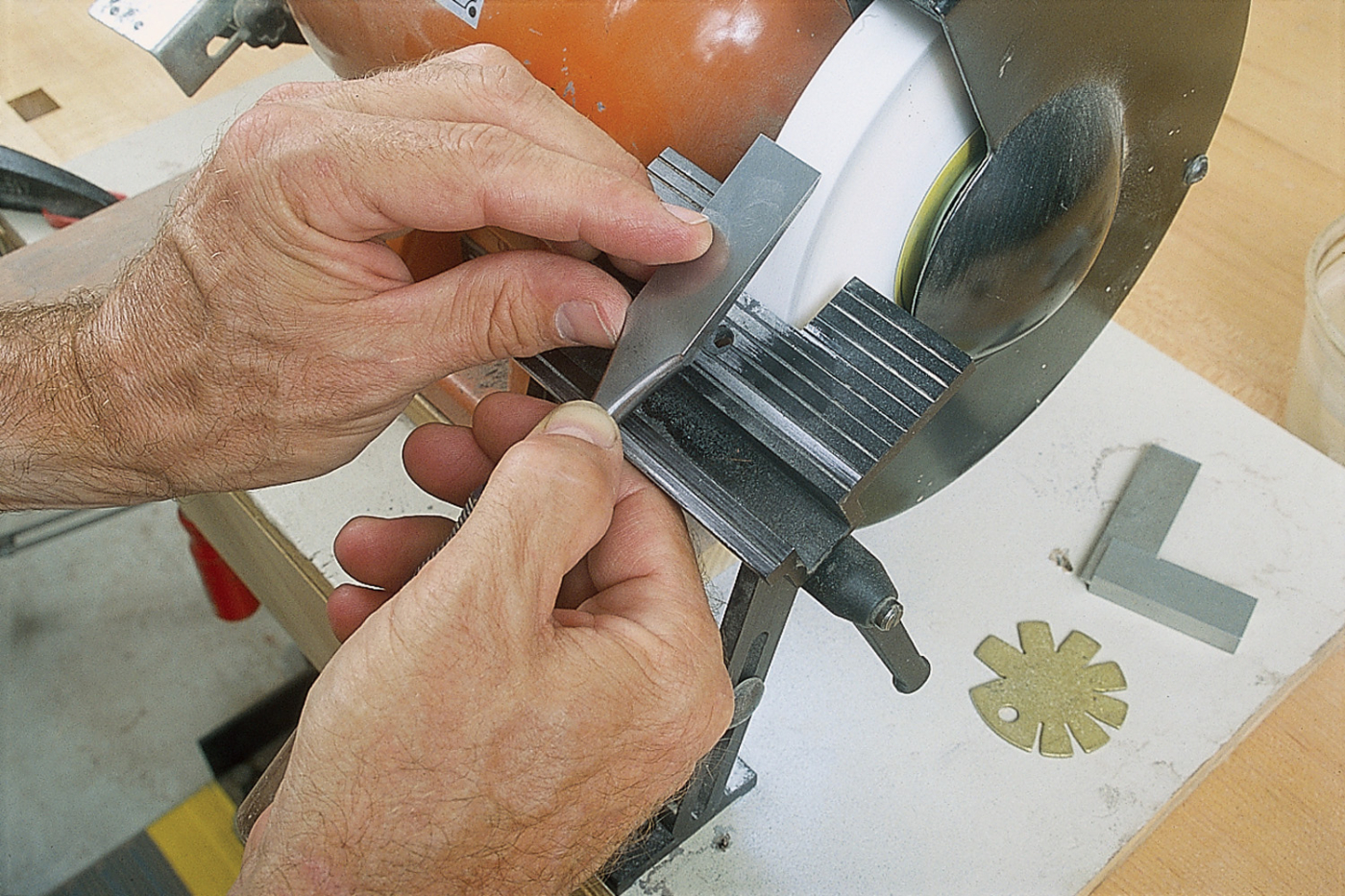
When grinding the bevel, pinch the chisel firmly, utilizing the second part of your index finger as a fence towards the remaining. A finger positioned frivolously on the again of the blade helps direct the grinding strain towards the wheel.
As you grind (which can take 15-20 minutes when eradicating a variety of steel), an important space to observe is the very finish of the chisel. Be sure that the blunt space narrows persistently with the intention to guarantee an evenly floor bevel. This may occasionally take some apply, however it’s properly definitely worth the effort as a result of a neatly floor bevel makes the following honing lots simpler. Maintain grinding till the as soon as blunt space is only a hair’s width.
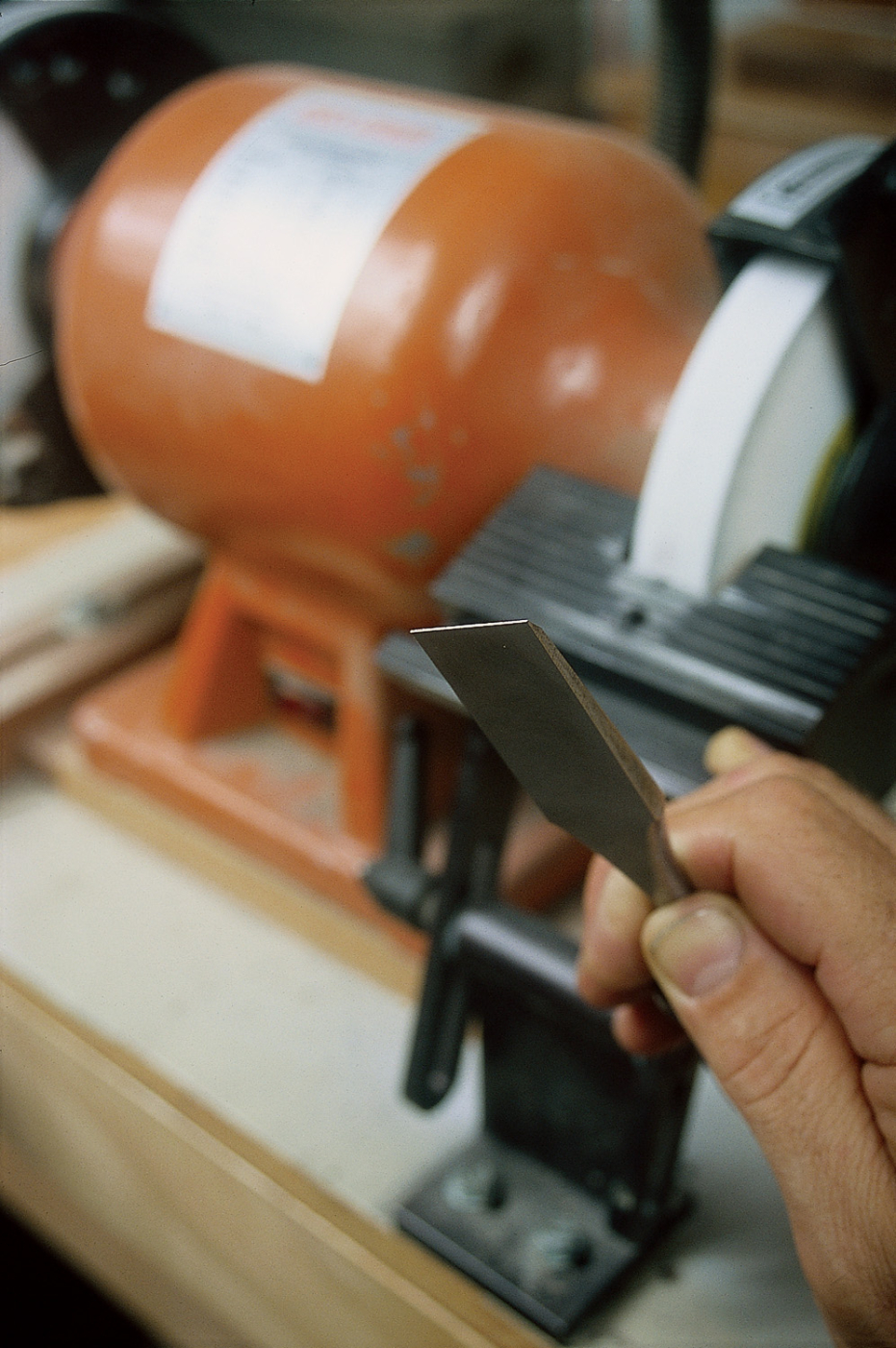
Correct grinding method ends in the blunted finish of the blade steadily and persistently narrowing in width till it’s gone. Keep in mind to keep up the identical grip all through the method.
Honing the Bevel
Start honing the bevel utilizing a freshly dressed #1,200-grit stone. Place the bevel down on the farthest finish of the stone since you’ll first pull it towards you. With the perimeters of the chisel pinched between the fingers of your dominant hand, and the chisel oriented at about 45° to the size of the stone, apply robust downward power behind the bevel with the index finger of your reverse hand. Be sure that the toe and the heel of the bevel make agency contact towards the stone. The opposite fingers of your dominant hand ought to curl beneath the blade and tang to easily maintain the chisel on the correct angle, making use of solely sufficient raise to maintain it from falling. The farther ahead you retain your arms and the extra downward strain you apply on the bevel, the extra you’ll forestall the device from rocking and rounding over the bevel within the course of.
Now, along with your wrists locked, pull the chisel towards you, sustaining agency strain over the bevel. Afterward, hop the chisel again to the far finish of the stone, and repeat a couple of times. These preliminary pull strokes clean out the grinding scratches on the very edge, making your upcoming pushes of the chisel a lot simpler and decreasing the possibility of friction-induced rocking throughout pushing. After these first few strokes, you must now have the ability to hone simply with back-and-forth stokes the complete size of the stone for effectivity. Keep in mind to maintain the slicing fringe of the chisel oriented diagonally to the stone to assist forestall rocking.
As quickly because the newly honed aspect runs all the way in which throughout the innovative, you’re completed with the #1,200-grit stone. At this level, take a while to verify your progress beneath magnification. Then spritz water on a freshly dressed end stone, and work the bevel on it in the same method till the aspect is evenly polished.
The ultimate fast activity is to take away any high-quality wire edge created within the sharpening course of. To do that, lay the chisel on its again on the far finish of the stone, then pull it towards you making use of a variety of downward strain on the bevel. This preliminary pull stroke, as an alternative of a push stroke, prevents trapping a wire edge beneath the chisel. Work the chisel forwards and backwards three or 4 instances, then flip it onto the bevel once more for a couple of strokes. End with a couple of ultimate strokes on the again and also you’re completed.
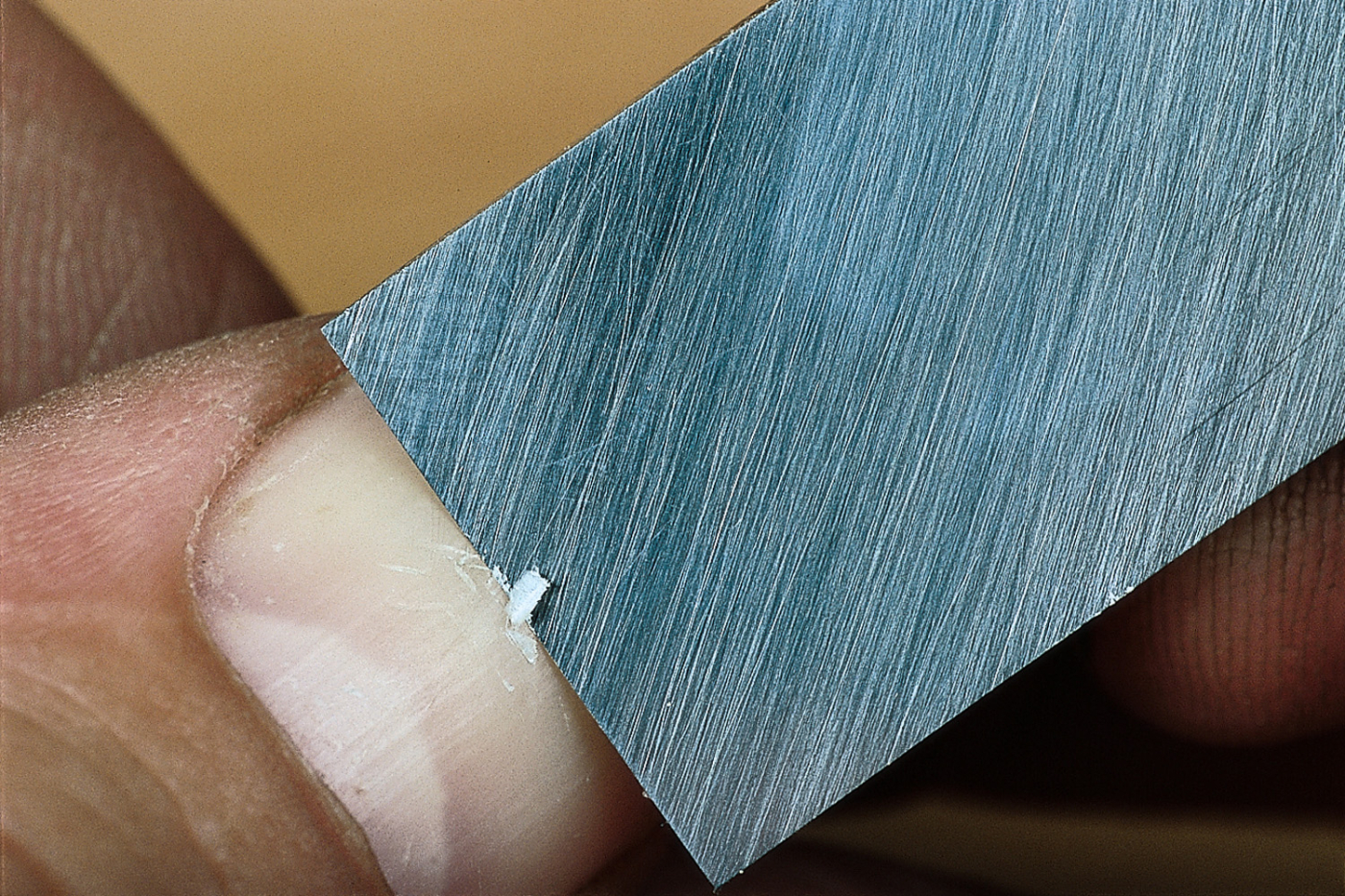
If a blade is actually sharp, it’s going to take a lightweight shaving out of your thumbnail. This magnified shot, which exhibits the #8,000-grit scratch sample, is identical polish seen on the restored chisel within the images on the prime of this text, however considered from straight on.
In the event you’ve completed your job properly, at this level you must have the ability to shave your arm hair or pare only a whisper of a shaving out of your thumbnail, as proven above. You can even welcome a brand new member to your loved ones of instruments.
Bonus: Honing freehand
 Entrance view: The key to profitable freehand honing is to pay attention your whole consideration on the enterprise finish of the chisel, making use of robust downward strain above the bevel along with your left hand. Use your proper hand to energy the chisel, pinching its sides between your index finger and thumb, as proven right here.
Entrance view: The key to profitable freehand honing is to pay attention your whole consideration on the enterprise finish of the chisel, making use of robust downward strain above the bevel along with your left hand. Use your proper hand to energy the chisel, pinching its sides between your index finger and thumb, as proven right here.
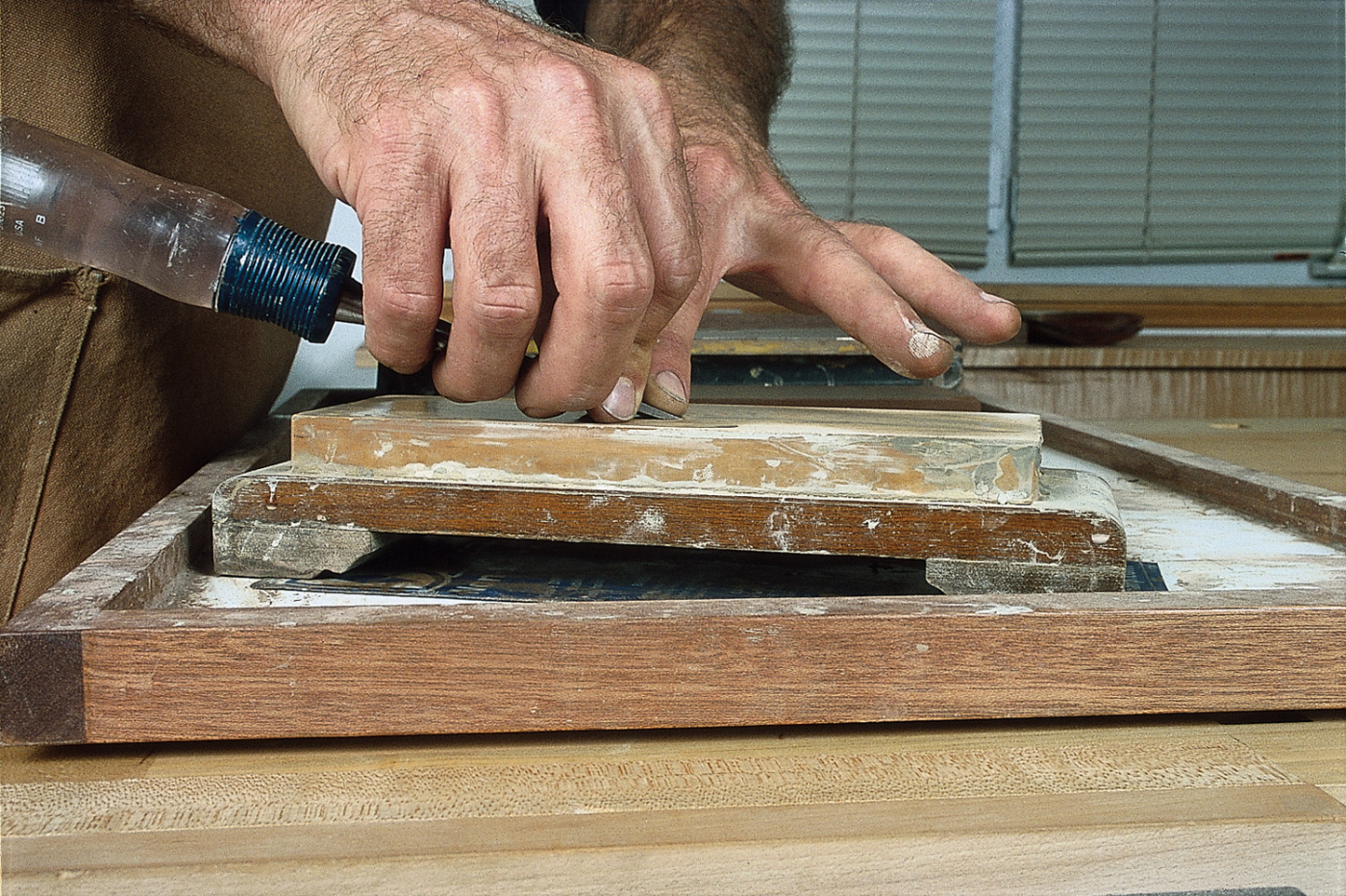 Facet view: Curl the remaining fingers beneath the blade, making use of simply sufficient raise to maintain the deal with from falling (Lefties, merely reverse all these instructions.)
Facet view: Curl the remaining fingers beneath the blade, making use of simply sufficient raise to maintain the deal with from falling (Lefties, merely reverse all these instructions.)
Product Suggestions
Listed here are some provides and instruments we discover important in our on a regular basis work across the store. We might obtain a fee from gross sales referred by our hyperlinks; nevertheless, we now have fastidiously chosen these merchandise for his or her usefulness and high quality.

